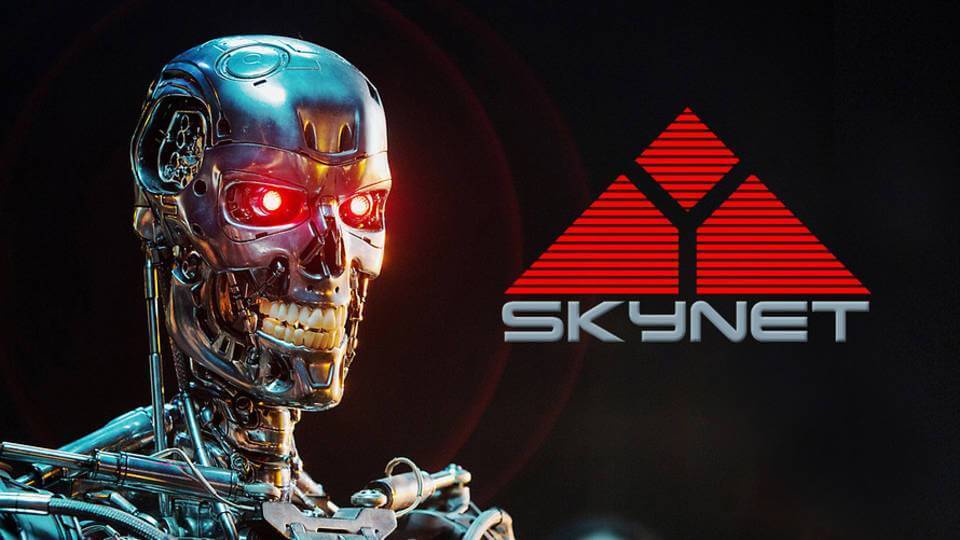"I Have No Mouth, and I Must Scream" is a science fiction story written by Harlan Ellison. The story was originally published in March 1967 in the American magazine If, and in 1968 he won the Hugo award for best short story. This story tells how a military computer (AM, taken from I think, therefore I am) becomes aware of itself and decides to end the human race through a nuclear holocaust, rescuing only five people, four men and one woman.
On October 20, 1984, the film "The Terminator" was released, directed by James Cameron and performed by Arnold Schwarzenegger and Linda Hamilton; This film, which already has 5 sagas today, is based on Ellison's story, where SKYNET artificial intelligence is created.
SKYNET is the artificial intelligence created by the scientist Miles Bennet Dyson, who works for the company "Cyberdyne Systems Corporation", and is capable of controlling the United States military arsenal independently of humans.
In the film, human decisions are eliminated from the defense system and SKYNET manages to become aware of itself on August 29, 1997, at 2:14 AM. Humans panic and try to turn it off. As a defense, the extermination of human beings begins immediately, as SKYNET considers them a serious threat to their own survival.
At present, the IoT is the same principle as in James Cameron's film, "everything connected at all times."
Artificial intelligence connected to the Internet of Things
IoT is becoming increasingly intelligent, and this fact is not going unnoticed among organizations. Venture capital investments in new IoT companies that used AI have increased considerably and the main software providers of the IoT platform now offer integrated Artificial Intelligence capabilities.
If the IoT is about connecting machines (usually wirelessly) and making use of the data generated from those machines, AI is about adding an additional layer of software, using that data to cause more intelligent behavior on machines of all kinds.
IoT needs artificial intelligence and vice versa: like IoT devices, they will generate large amounts of data from different sources and types of sensors, so it will be necessary to deal with these problems. Data is only useful if you create an action. With IoT, you can receive data, you can receive alerts. But for the data to be really actionable, it is necessary to complement it with the context. IoT and AI together are this context, that is, ‘connected intelligence’ and not just connected devices.
RPA (Robotic process automation)
Robotic process automation (RPA) is evolving thanks to new technologies, and for many it is the most popular branch of artificial intelligence.
RPA robots are capable of mimicking many of the actions of human users. They log into applications, move files and folders, copy and paste data, fill out forms and extract structured and semi-structured data from documents and browsers, among other tasks.
Robotic process automation is the technology that allows anyone to configure computer software that makes it possible for a “robot†to emulate and integrate the actions of a human interaction into digital systems to execute a commercial process.
Robots use the user interface to capture data and manipulate existing applications in the same way as humans. These robots perform interpretations, activate responses and communicate with other systems to operate in a wide range of repetitive tasks. And they do considerably better, because software robots never sleep, do not make mistakes and are much less expensive than employees.
Now it is not long before we can have “Terminator†robots at our service to help us perform functions in our daily lives, such as walking the dog, taking out the garbage or going to the pharmacy for some medication.

